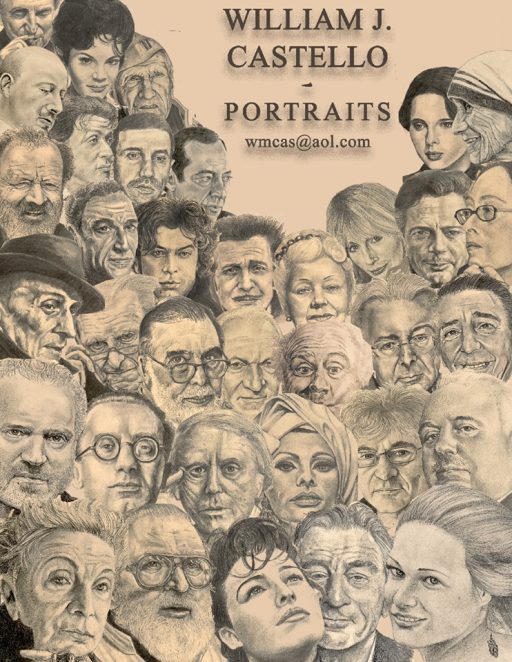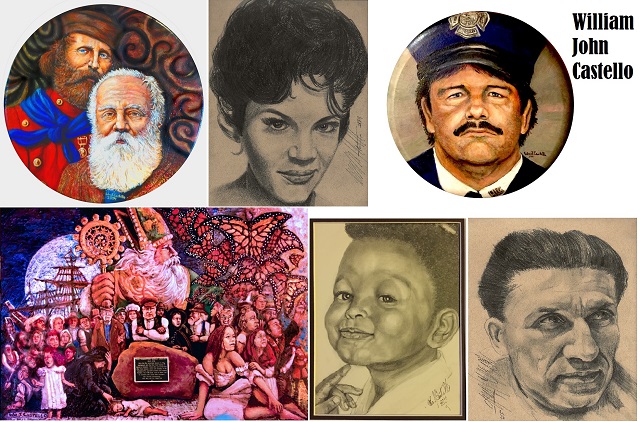Interview by Tiziano Thomas Dossena
His portraits are not just beautiful images, but they capture the soul of the character represented and they are alive, something that only a few artists can claim for their art production. William John Castello has been drawing and painting portraits all his life and it shows. The artist kindly met with me and spoke about his art and his life…
L’Idea: William, at what age did start having the ‘call’ to be an artist?
William John Castello: As a child I had a condition know as chronic bronchitis that threatened my life. Between the medications and my vulnerability to infections, I spent most of my childhood indoors. I had precious little exposure to others beyond my immediate family. To fill the many hours, I would take typewriter paper and try to reproduce the faces on the covers of LOOK, LIFE and TIME magazines. I became quite good at in time and, by the time I was free of the bronchitis, the skills I had developed became my signature characteristic when I found myself among my peers in grammar school. I was the “artist”. My first public exhibition was in the local Brooklyn Public Library. They displayed a dozen of my portraits with full name credit and story. The exhibit lasted a full six months at the librarian’s insistence and led the way to local public recognition of my abilities. The nuns from my grammar school, St. Jerome’s in Flatbush, Brooklyn, encouraged and displayed my work for years to follow. Fate turned a life-threatening illness into a life-long path.
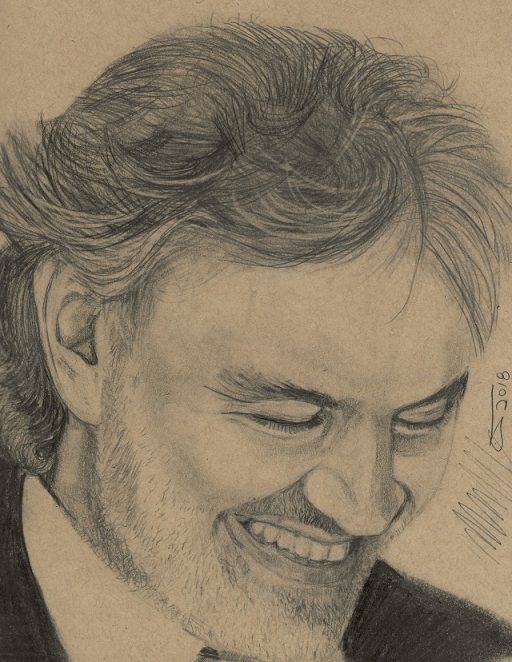
L’Idea: So, you started early and follow your passion all through college, earning a B.F.A. in Fine Arts from St. John’s University. What happened after that?
William John Castello: I had to fight for my undergraduate experience. Born of two second and third-generation Italian-American parents, their desire for me to succeed was the driving force behind their demand for excellence in my academic endeavors. My good grades were the result of my parents’ efforts and constant insistence. They wanted me to become a doctor or lawyer like so many of my cousins and my sister had. I volunteered in a city hospital for two summers during high school and gained nothing but revulsion of the medical professions. Law was tacitly interesting but resulted in putting me to sleep. I wanted to be an artist. My dad said, “The word ‘artist’ is usually preceded by the word ‘starving’.” I pleaded with him to send me to art school. He would under one condition; that if I had not found a lucrative job as an artist in the first six months, I would repay him for my tuition.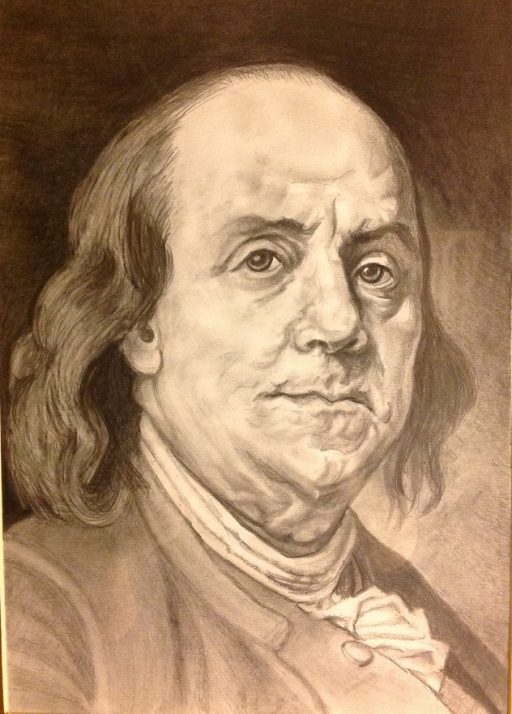
And so, following a wonderful three-and-a-half-year education in the fine arts by the European instructors in St. John’s, I obtained an internship in the art department of the MacNeil-Lehrer Report on PBS. After six-months, I graduated with a position as a graphic journalist at the Associated Press. I never had to pay my father back.
For the next 35 years, I produced graphics, stories, information packets, multi-media presentations and more from the newsroom in the world headquarters of the Associated Press in New York City. All that time, I remained a fine artist when off duty. My time at the AP proved to be worth the education of a thousand universities. The window to the world was opened to me every day and I had to learn and interact. Never easy, not without many sacrifices and yet, the best view of all humanity that anyone may ever have.
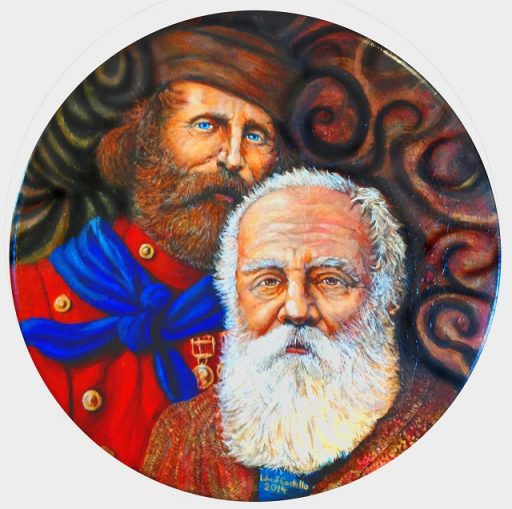
When I saw retirement coming I obtained a master’s degree in global diplomacy from Norwich University to prepare for a second career, possibly in international affairs, which dominated my attention in my journalistic career.
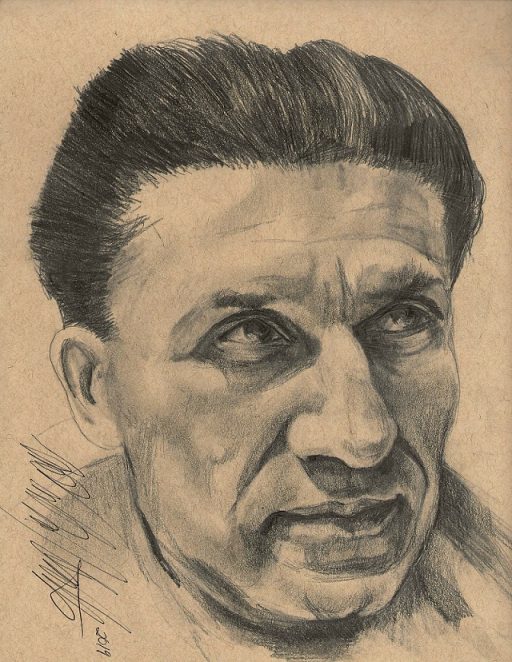
L’Idea: Now you teach Professional Journalism at your alma mater. Why Journalism and not Art?
William John Castello: Upon retirement, my St. John’s alumni association informed the university that there was a journalist on the loose. I was contacted and offered a job as an adjunct professor on the spot. When I had a second to comprehend such a career move the marriage was made. They needed a journalist and I am one. As far as the fine arts, art history etc. I was advised to obtain yet one more master’s degree and then reinvent myself again as a permanent professor of whatever I wished.
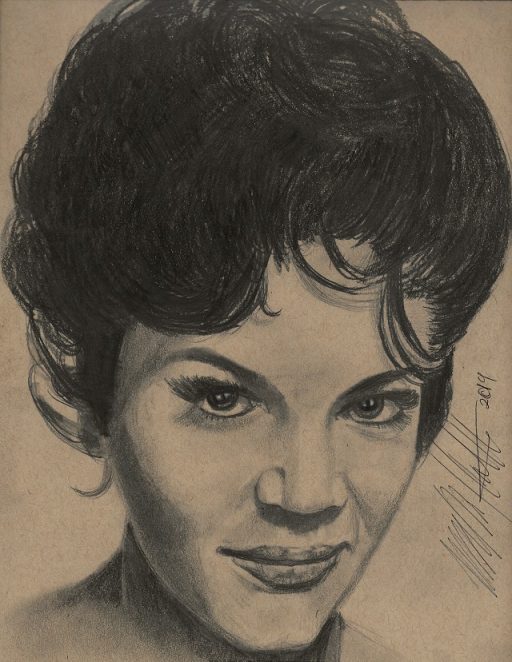
L’Idea: I noticed that you mostly draw portraits. What is the reason for this choice?
William John Castello: I have a love of the human face. When I was a lonely child, the television set was my constant companion. With the sound on or off, there was always the faces of familiar people. They looked in on me with the luster of black and white. They provided entertainment, humor, drama, and thrills. The faces in the magazines were compelling. I learned to know (or imagine) their thoughts through their expressions. My portraits became my people, my friends and the path to having others recognize me in time. The human face is magical, expressive. It never lies.
I produce moments of emotion and thought rather than the image of flesh and bone. My portraits are encapsulations of a moment in time, a distinctive flash of thought or emotion, a signature characteristic of a distant life. I try to capture the energy of a person in each rendering.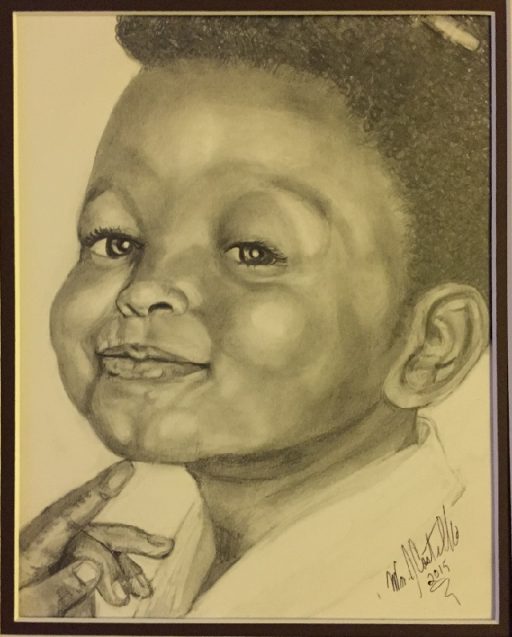
L’Idea: Do you use only the pencil or also other media in creating your works?
William John Castello: I have experimented with almost every artistic medium available, from watercolor to cast bronze. I’ve produced many oil and acrylic paintings, sculpted wood, stone and clay and worked metal. My love of portraiture determined my favorite medium, a simple pad and something to draw with. My most recent set of over two hundred portraits on tan paper in pencil and graphite began with my desire to study the works of Da Vinci and attempt to recreate the look of line on colored paper.
L’Idea: One of your recent major works is “Journey to Fiddler’s Green.” Could you talk a bit about that?
William John Castello: Upon retirement, I realized that I had not produced a canvas in many years due to time and space constraints. For the prior twenty-five years, I have shared much of my life with friends associated with the Ancient Order of Hibernians which is composed of the sons and daughters of Ireland. I was folded in as an associate member (having no blood or claim from Ireland) and as their artist. The twining of these two paradigms resulted in my search for a great project to produce on canvas.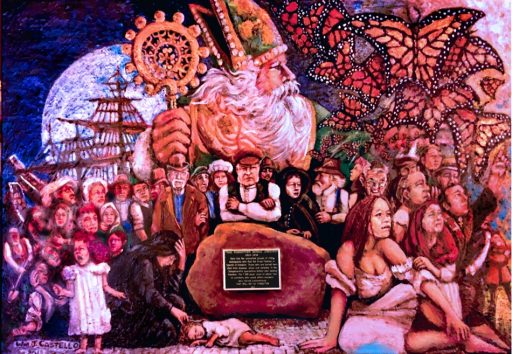
Staten Island was the gateway to the new world during the potato famine in Ireland. Thousands of Irish men and women were forced onto “coffin ships” by their English overlords and sent across the Atlantic to fend for themselves. Upon reaching New York, many had died in transit. Many more had contracted a disease in the unkind confinement of these hellish ships. When they disembarked, the dead were anonymously buried in mass graves and the sickened arrivals were quarantined in hospital/death-houses on the Staten Island shore. Thousands died yet their final resting place remained a mystery until a local high school student researched historical documents and found the mass grave, located on the eighteenth hole of a local golf course.
Upon the revelation, the Hibernians contracted me to create a commemorative piece of art, and so, “Journey to Fiddler’s Green” was created: (below)
L’Idea: You had recently a show at the Garibaldi Meucci Museum. What was the theme of the exhibit? Will something else develop from this particular experience?
William John Castello: The year-long exhibit at the GMM is known as the Sons and Daughters of Italy which combines portraits with biographies written by Marianna Randazzo and regional clothing made by local seamstresses and organized by Mary Ann Prince. Originally the exhibit was organized to celebrate the 100th anniversary of Order Sons and Daughters of Italy in America Foundation’s ownership of the Garibaldi-Meucci Museum.
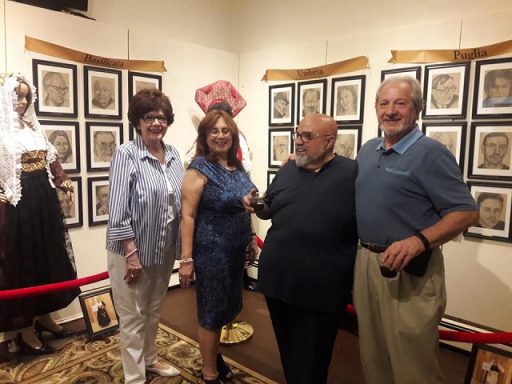
We, the contributors, took the opportunity to bring awareness to the world-changing contributions made by those of Italian descent. We brought to light artists and film stars, scientists and philosophers, poets and astronauts, all coming from one of the twenty regions of Italy.
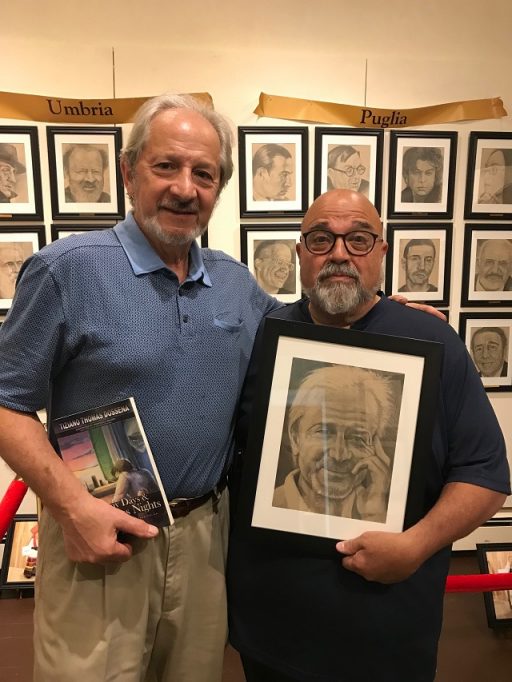
Currently Marianna Randazzo and myself are composing a book, which we hope will facilitate the children, grandchildren and the descendants of all Italians to gain a proud and rich identity. Too often Italy is associated with gangsters or movie stars, ancient artists or corrupt politicians. This problem gives credence to cruel stereotypes and misconceptions. We strive to expand the ranks of those associated with the country, bring awareness to its brilliant and hard-working people and bring understanding about the true Italy to the world.
L’Idea: Do you have any special projects in mind for the future? Any particular shows, maybe?
William John Castello: We wish to create a series of books specializing in the Italian contribution to specific professions and to create similar books dealing with other ethnic groups. I will continue to find new inspirations and projects and explore new topics to inspire new creations.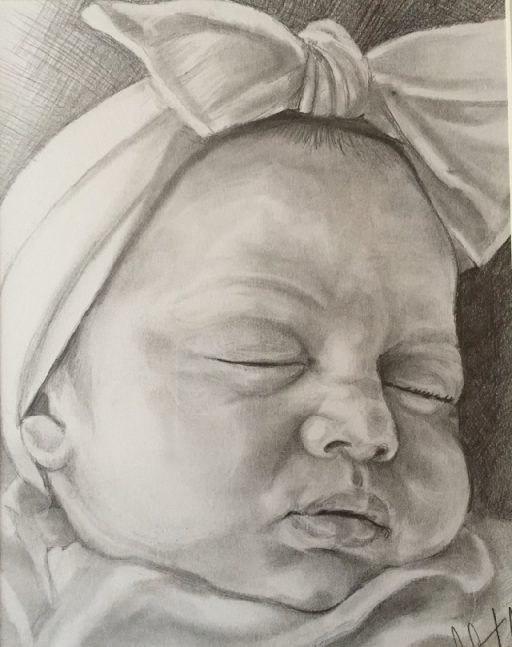
L’Idea: Who is the artist that inspired you the most and why?
William John Castello: My mentor, Claude Ponsot was a student of Ferdinand Léger, a co-founder of Cubism and close friend of Pablo Picasso. Ponsot taught painting at St. John’s and selected me as one of his students to carry on the tradition. I chose not to.
My greatest inspiration, however, is Vincent Van Gogh. I see only pure brilliance in what many consider his insanity. His mind translated reality and emotion together to produce their most complex and beautiful expression. He spoke with color and texture. He gave emotion to each stroke. His troubled mind was the confluence of all of man’s experiences. His hand translated vast complexity into recognizable form.
Van Gogh’s work embodies the meaning of each of my portraits. They are depictions of the human emotions and experiences in blazing colors and imbued with deep meanings. Our images can be interpreted as actual people or objects and yet they are abstract depictions of the human experience.
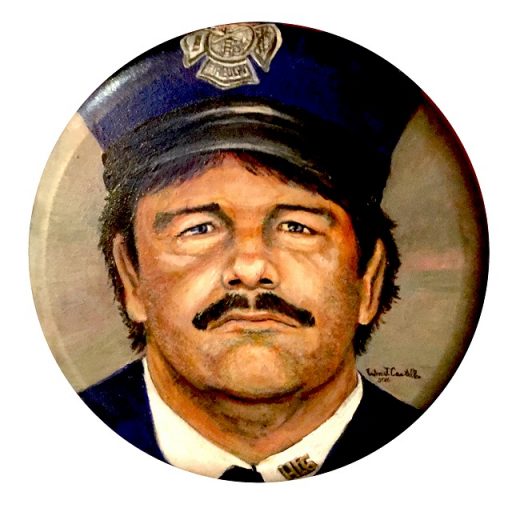
L’Idea: If you could meet and talk to any historical character, dead or alive today, who would he or she be? About what would you like to talk with him, or her?
William John Castello: I have always wanted to understand the mind of Da Vinci. His curiosity, observations, creations, and vision fascinate me. He never assumed to know what he had not proven to himself. He invented, wrote, sculpted and drew, in addition to his painting. His words found their way to the most powerful people of his time. His mind was the most precious driver of man’s artistic and technical evolution and I would love to know him.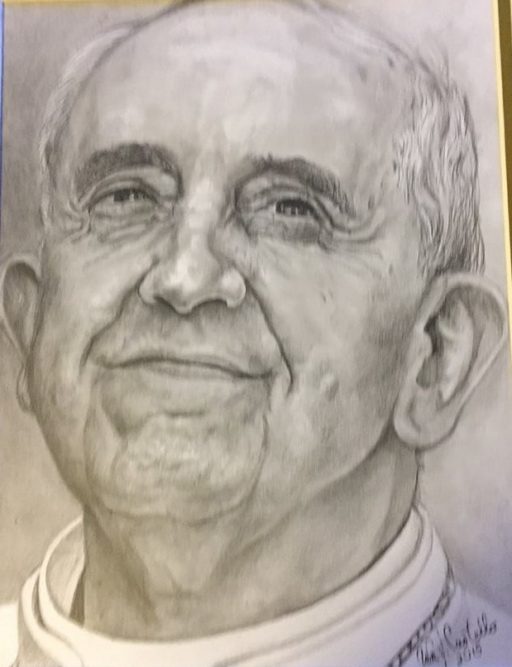
L’Idea: How much did being of Italian descent influence you in the Arts and in your private life?
William John Castello: I was distant from my heritage as a child. My grandparents attempted to provide some instruction, but they had limited contact with me. My curiosity about my origin eventually led me to discover Italy and its pivotal role in history.
I grew up in a predominantly Irish German neighborhood in Brooklyn. I was subjected to derision for my heritage and kept it from the spotlight for much of my youth. I was upon meeting my future wife Maria and her family, that I began to understand my heritage and adapt it to my life. The rest is history.
